 Search by Keyword
|
“TILL THERE WAS YOU”
(Meredith Willson)
The significance of “Till There Was You” in The Beatles' recorded canon appears to be infinitesimally small to most Beatles fans, many not having knowledge of them even recording the song. In fact, some sheet music books which claim to include all of the released Beatles material omit the song, not because of it being a cover song, but simply because they forgot to include it.
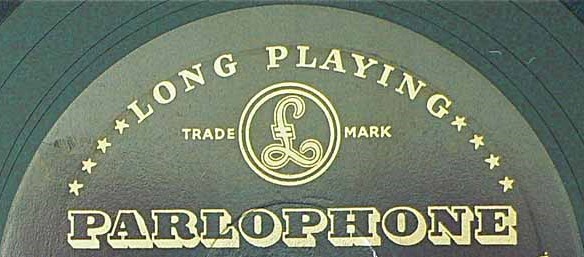 The truth of the matter is that this very song was a major determining factor in The Beatles being signed to EMI’s Parlophone Records in Britain, thereby catapulting them to fame throughout the world. If it wasn’t for The Beatles adding “Till There Was You” to their repertoire, they no doubt would have had the same fate of most of the "beat groups" of the Liverpool music scene, such as Cass and The Casanovas, Derry and The Seniors and Rory Storm and The Hurricanes. The truth of the matter is that this very song was a major determining factor in The Beatles being signed to EMI’s Parlophone Records in Britain, thereby catapulting them to fame throughout the world. If it wasn’t for The Beatles adding “Till There Was You” to their repertoire, they no doubt would have had the same fate of most of the "beat groups" of the Liverpool music scene, such as Cass and The Casanovas, Derry and The Seniors and Rory Storm and The Hurricanes.
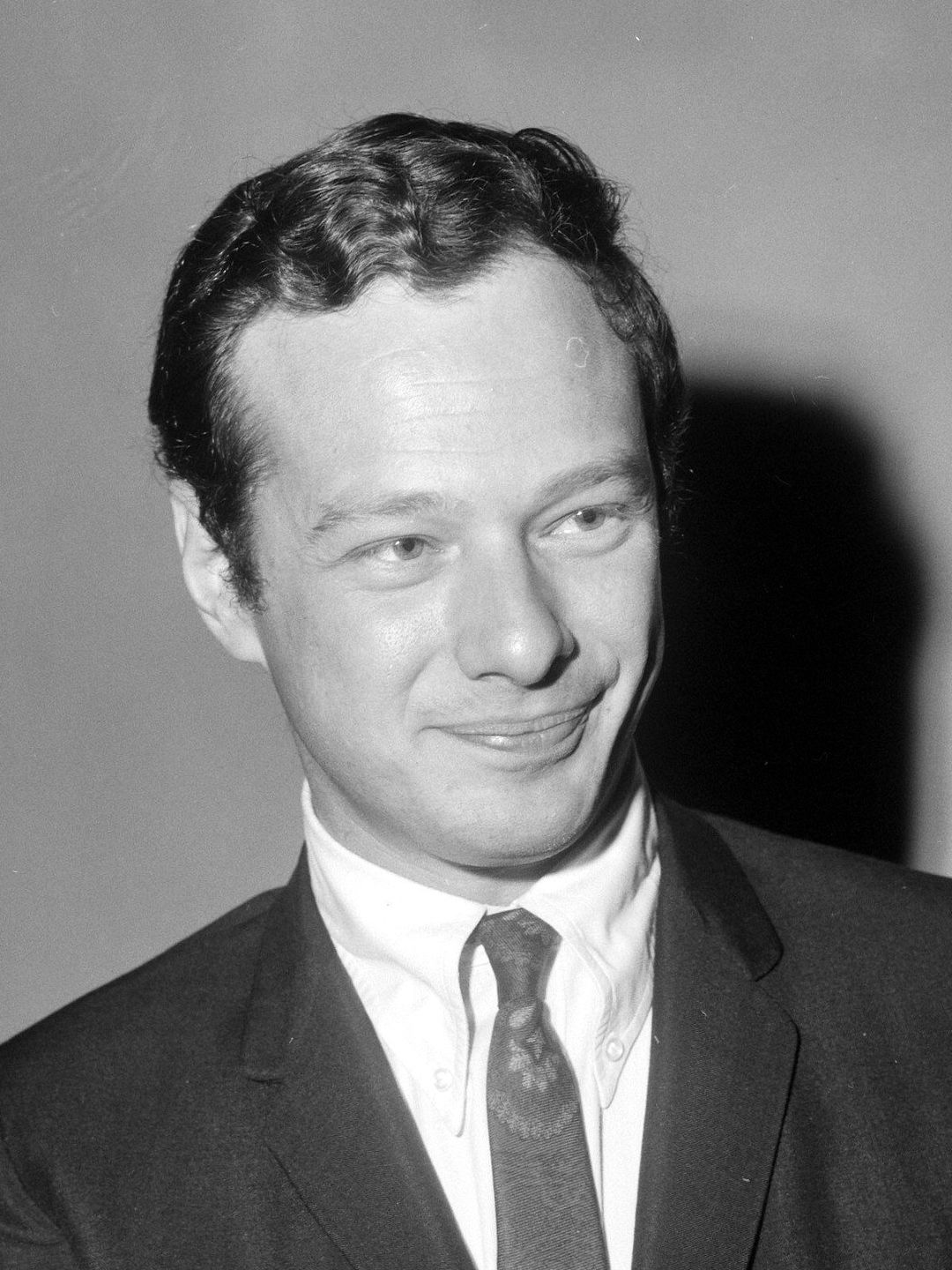 January 1st, 1962, was a monumental day in The Beatles career. Brian Epstein had arranged an audition for the band at Decca Records and had hand-picked fifteen songs for them to perform in their studio. Brian’s intent was to show off every facet of their talent, so he chose to include a couple of soft ballads in the hope of appealing to a more adult audience. The entire audition was recorded on that day to enable the A & R staff to review the recordings in making their decision about signing the group to their record label. January 1st, 1962, was a monumental day in The Beatles career. Brian Epstein had arranged an audition for the band at Decca Records and had hand-picked fifteen songs for them to perform in their studio. Brian’s intent was to show off every facet of their talent, so he chose to include a couple of soft ballads in the hope of appealing to a more adult audience. The entire audition was recorded on that day to enable the A & R staff to review the recordings in making their decision about signing the group to their record label.
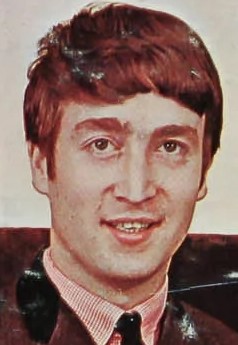 In early February of that year, the news reached the ears of Brian Epstein that Decca had decided not to sign The Beatles to their label. When The Beatles heard this news, John Lennon blamed Brian Epstein for them failing the audition, saying that his choice of songs was not a good representation of their live rock and roll performances. Nonetheless, one good outcome of the Decca audition was Brian Epstein acquiring two reel-to-reel tapes of the audition, which were professional recordings of the fifteen songs The Beatles played on that day. In early February of that year, the news reached the ears of Brian Epstein that Decca had decided not to sign The Beatles to their label. When The Beatles heard this news, John Lennon blamed Brian Epstein for them failing the audition, saying that his choice of songs was not a good representation of their live rock and roll performances. Nonetheless, one good outcome of the Decca audition was Brian Epstein acquiring two reel-to-reel tapes of the audition, which were professional recordings of the fifteen songs The Beatles played on that day.
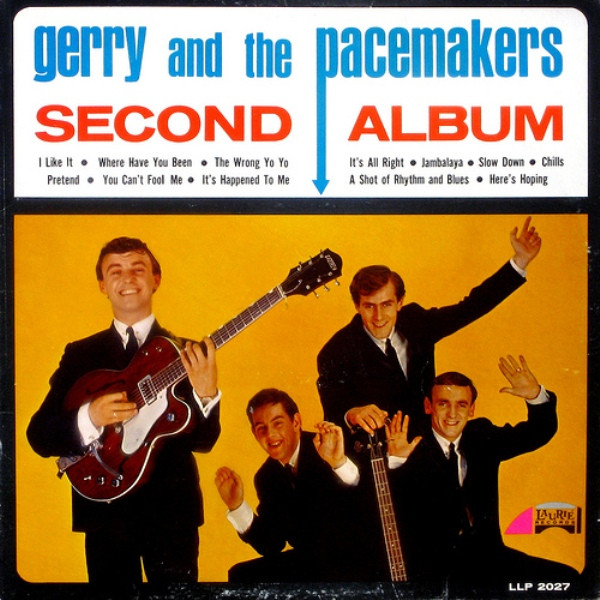 Brian Epstein decided to transfer these tapes to records shortly thereafter, which would enable him to easily play these songs to other record companies in hopes of securing a recording deal. Interestingly, the 78 rpm disc Brian Epstein made of "Till There Was You" (with John's "Hello Little Girl" on the b-side) has surfaced in 2016 as kept in the loft of Gerry & The Pacemaker's keyboardist Les Maguire wrapped in paper for over 50 years. It sold at auction in Britain for 77,500 pounds, thus allowing Les Maguire's daughter to purchase a house. Brian Epstein decided to transfer these tapes to records shortly thereafter, which would enable him to easily play these songs to other record companies in hopes of securing a recording deal. Interestingly, the 78 rpm disc Brian Epstein made of "Till There Was You" (with John's "Hello Little Girl" on the b-side) has surfaced in 2016 as kept in the loft of Gerry & The Pacemaker's keyboardist Les Maguire wrapped in paper for over 50 years. It sold at auction in Britain for 77,500 pounds, thus allowing Les Maguire's daughter to purchase a house.
 On February 13th, 1962, Brian Epstein met with George Martin, who was the head of A & R at EMI’s Parlophone Records. George Martin, who was looking for the next pop idol to be secured to his small label, eagerly listened to the discs of the Decca audition. Although not overly-impressed, “Till There Was You” stuck out like a sore thumb. He was impressed by George Harrison's guitar work as well as McCartney’s vocals, which earmarked Paul as a possible lead singer of the group in George Martin’s mind. He concluded that it might be worth his while giving The Beatles a proper audition for EMI, which was eventually slated for June 6th, 1962. On February 13th, 1962, Brian Epstein met with George Martin, who was the head of A & R at EMI’s Parlophone Records. George Martin, who was looking for the next pop idol to be secured to his small label, eagerly listened to the discs of the Decca audition. Although not overly-impressed, “Till There Was You” stuck out like a sore thumb. He was impressed by George Harrison's guitar work as well as McCartney’s vocals, which earmarked Paul as a possible lead singer of the group in George Martin’s mind. He concluded that it might be worth his while giving The Beatles a proper audition for EMI, which was eventually slated for June 6th, 1962.
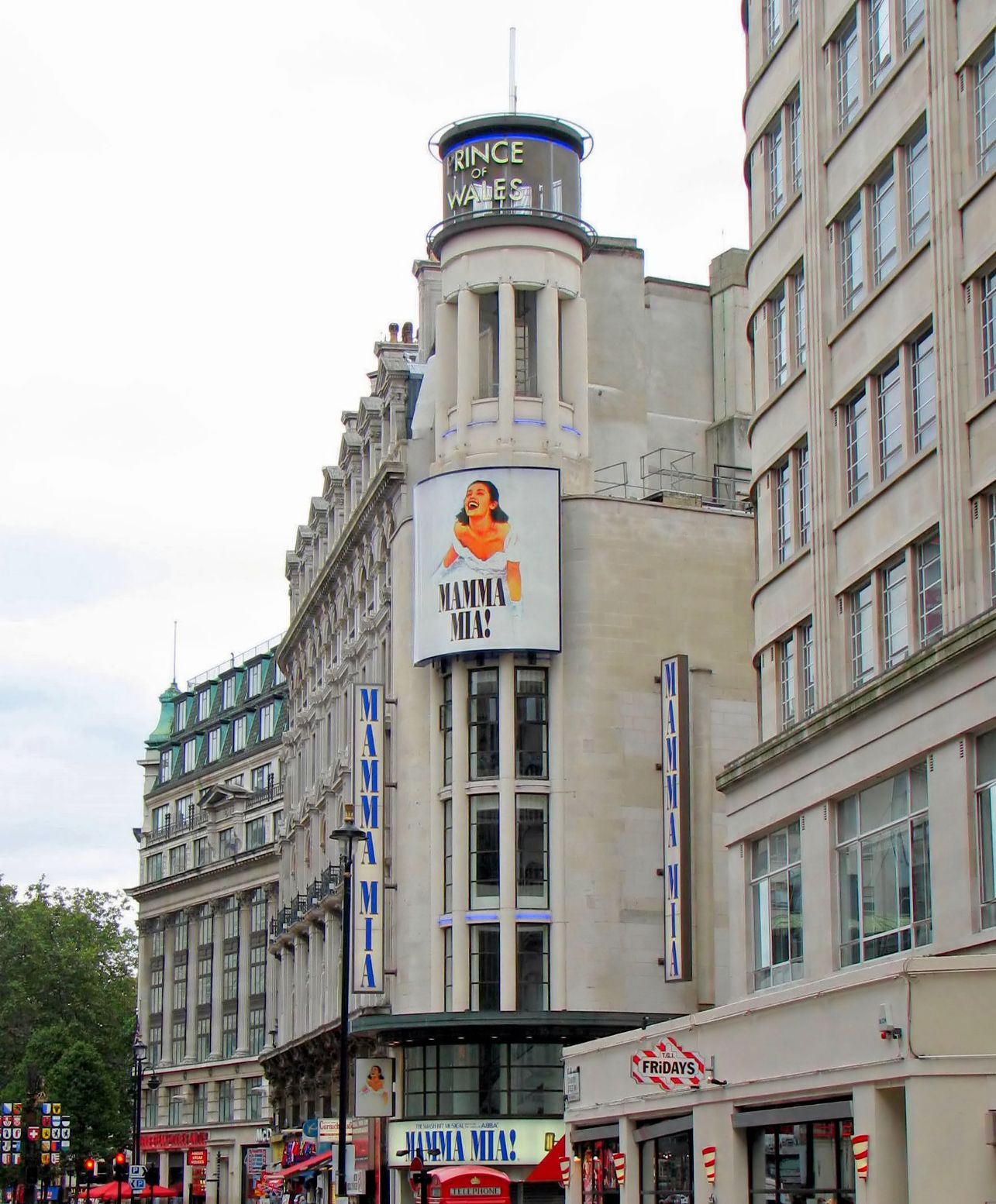 As it turned out, John Lennon was wrong in this case. It was the inclusion of the soft ballad “Till There Was You” that got them the audition with EMI, which led to them being signed up to the Parlophone label. This event, in turn, gave them the chance to show what they could do as performers and songwriters which, shortly thereafter, made the group a household name around the world. The power that this song and The Beatles’ performance of it wielded was remembered by Brian Epstein, as it was wheeled out on different strategic occasions when they were in a position to impress, such as at the Royal Command Performance at the Prince Of Wales Theatre on November 4th, 1963, and their first Ed Sullivan Show appearance on February 9th, 1964. As it turned out, John Lennon was wrong in this case. It was the inclusion of the soft ballad “Till There Was You” that got them the audition with EMI, which led to them being signed up to the Parlophone label. This event, in turn, gave them the chance to show what they could do as performers and songwriters which, shortly thereafter, made the group a household name around the world. The power that this song and The Beatles’ performance of it wielded was remembered by Brian Epstein, as it was wheeled out on different strategic occasions when they were in a position to impress, such as at the Royal Command Performance at the Prince Of Wales Theatre on November 4th, 1963, and their first Ed Sullivan Show appearance on February 9th, 1964.
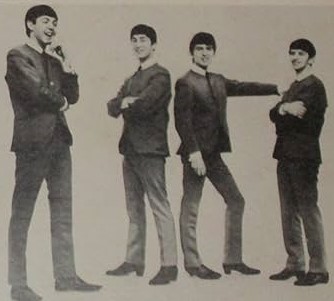 Another occasion that warranted "Till There Was You" being showcased was the recording of their second UK album “With The Beatles.” With their huge backlog of cover songs contained in their set lists for the past few years, it was a given that they would eventually include this impressive song, which basically got them their recording contract in the first place. Another occasion that warranted "Till There Was You" being showcased was the recording of their second UK album “With The Beatles.” With their huge backlog of cover songs contained in their set lists for the past few years, it was a given that they would eventually include this impressive song, which basically got them their recording contract in the first place.
Songwriting History
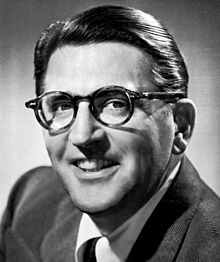 “Till There Was You” was composed by playwright, songwriter and conductor Meredith Willson, but was originally titled "Till I Met You" as it was first recorded by Eileen Wilson on October 25th, 1950 and featured on the January 14th, 1951 episode of NBC's radio program "The Big Show" sung by Fran Warren. Eventually, Meridith Willson changed the title to "Till There Was You" and then adapted the song for his Tony and Grammy Award winning musical “The Music Man.” Meredith Willson, born Robert Meredith Reiniger, attended Julliard in New York City (back when it was called the Institute of Musical Art) and became accomplished as a flautist and piccolo player. He was privileged to be a member of John Philip Sousa’s band between 1921 and 1923, and then the New York Philharmonic Orchestra between 1924 and 1929. “Till There Was You” was composed by playwright, songwriter and conductor Meredith Willson, but was originally titled "Till I Met You" as it was first recorded by Eileen Wilson on October 25th, 1950 and featured on the January 14th, 1951 episode of NBC's radio program "The Big Show" sung by Fran Warren. Eventually, Meridith Willson changed the title to "Till There Was You" and then adapted the song for his Tony and Grammy Award winning musical “The Music Man.” Meredith Willson, born Robert Meredith Reiniger, attended Julliard in New York City (back when it was called the Institute of Musical Art) and became accomplished as a flautist and piccolo player. He was privileged to be a member of John Philip Sousa’s band between 1921 and 1923, and then the New York Philharmonic Orchestra between 1924 and 1929.
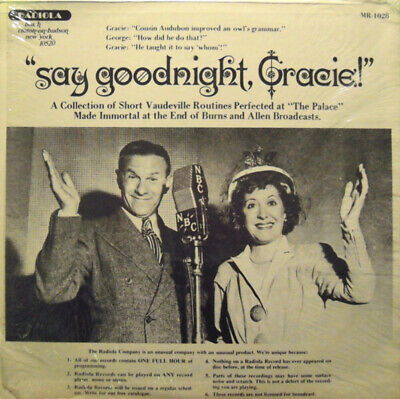 Meredith Willson started working for motion pictures shortly thereafter, garnering Academy Award nominations for his work on Charlie Chaplin‘s “The Great Dictator” in 1940 as well as “The Little Foxes” in 1941. During World War II, Meredith Willson worked with Armed Forces Radio Service, who also featured Bill Boodwin, George Burns and Gracie Allewn. Meredith Willson earned a regular spot on the Burns And Allen radio show, as well as serving as their bandleader. After the war, he became the musical director for the NBC comedy / variety radio show entitled “The Big Show” which featured Tallulah Bankhead as its host, the early incarnation of "Till There Was You" being featured therein as detailed above. “May The Good Lord Bless And Keep You” was the title of the famous song that Meredith Willson wrote as featured on this program. Meredith Willson started working for motion pictures shortly thereafter, garnering Academy Award nominations for his work on Charlie Chaplin‘s “The Great Dictator” in 1940 as well as “The Little Foxes” in 1941. During World War II, Meredith Willson worked with Armed Forces Radio Service, who also featured Bill Boodwin, George Burns and Gracie Allewn. Meredith Willson earned a regular spot on the Burns And Allen radio show, as well as serving as their bandleader. After the war, he became the musical director for the NBC comedy / variety radio show entitled “The Big Show” which featured Tallulah Bankhead as its host, the early incarnation of "Till There Was You" being featured therein as detailed above. “May The Good Lord Bless And Keep You” was the title of the famous song that Meredith Willson wrote as featured on this program.
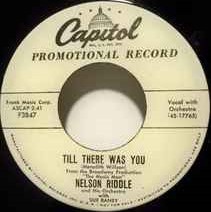 Meredith Willson wrote a total of four musicals in his lifetime, the first and most successful being “The Music Man,” which had its Broadway premier in 1957. Taking around eight years and thirty revisions to complete, he wrote over 40 songs for the musical, which included his newly revised “Till There Was You.” The song was so highly regarded that it was actually released as a single before the musical hit Broadway. Promotional copies of the single were released on November 26th, 1957, which was produced by Nelson Riddle and sung by seventeen-year-old Sue Raney. Meredith Willson wrote a total of four musicals in his lifetime, the first and most successful being “The Music Man,” which had its Broadway premier in 1957. Taking around eight years and thirty revisions to complete, he wrote over 40 songs for the musical, which included his newly revised “Till There Was You.” The song was so highly regarded that it was actually released as a single before the musical hit Broadway. Promotional copies of the single were released on November 26th, 1957, which was produced by Nelson Riddle and sung by seventeen-year-old Sue Raney.
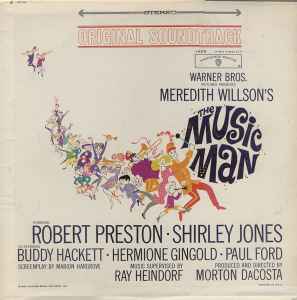 The cast recording album for the musical, released in January of 1958, won the first Grammy Award for the category Best Original Cast Album (Broadway or TV) ever issued. The album contains “Till There Was You” as sung by actress Barbara Cook. The musical was then adapted to the big screen in 1962 and featured Shirley Jones singing the song, as featured on the "Music Man" Origianal Soundtrack album. The cast recording album for the musical, released in January of 1958, won the first Grammy Award for the category Best Original Cast Album (Broadway or TV) ever issued. The album contains “Till There Was You” as sung by actress Barbara Cook. The musical was then adapted to the big screen in 1962 and featured Shirley Jones singing the song, as featured on the "Music Man" Origianal Soundtrack album.
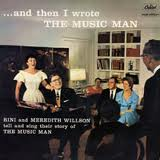 After three further musicals (“Here's Love," "1491" and "The Unsinkable Molly Brown"), he continued his career in music, releasing an album entitled “…and Then I Wrote The Music Man” (credited to Rini and Meredith Willson) on Capitol Records, as well as writing the University of Iowa’s fight song “For I For S Forever.” Meredith Willson also wrote two biographies, the first being “And There I Stood With My Piccolo” in 1948, and the second being “But He Doesn’t Know The Territory” in 1959. Having died on June 15, 1984, he was most known as a songwriter of very well-crafted, subtle yet complex melodies that appealed to mass audiences of his day. His overall claim to fame is his writing the book, music and lyrics for the Broadway hit musical “The Music Man,” which featured the beautiful “Till There Was You.” After three further musicals (“Here's Love," "1491" and "The Unsinkable Molly Brown"), he continued his career in music, releasing an album entitled “…and Then I Wrote The Music Man” (credited to Rini and Meredith Willson) on Capitol Records, as well as writing the University of Iowa’s fight song “For I For S Forever.” Meredith Willson also wrote two biographies, the first being “And There I Stood With My Piccolo” in 1948, and the second being “But He Doesn’t Know The Territory” in 1959. Having died on June 15, 1984, he was most known as a songwriter of very well-crafted, subtle yet complex melodies that appealed to mass audiences of his day. His overall claim to fame is his writing the book, music and lyrics for the Broadway hit musical “The Music Man,” which featured the beautiful “Till There Was You.”
 The song, as featured in Act Two of "The Music Man," is a vehicle for the female lead character Marian Paroo (played by Shirley Jones in the movie) to sing to the male lead character Harold as they meet at the agreed upon spot at the footbridge. Marian Paroo here proceeds to tell Harold the difference he’s made in her life through the lyrics of this song. The song, as featured in Act Two of "The Music Man," is a vehicle for the female lead character Marian Paroo (played by Shirley Jones in the movie) to sing to the male lead character Harold as they meet at the agreed upon spot at the footbridge. Marian Paroo here proceeds to tell Harold the difference he’s made in her life through the lyrics of this song.
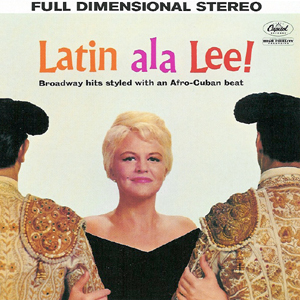 This song has been recorded by various artists, including the hit version by Anita Bryant With Monty Kelly And His Orchestra, this peaking at #30 on the US Billboard chart in mid 1959 (#14 in Cahbox). The version of the song that caught the attention of Paul McCartney was the rendition by Peggy Lee as recorded on the album “Latin ala Lee!” released January of 1960. "My cousin Betty Danher," Paul writes in his 2021 book "The Lyrics," "was a big influence on me musically. She loved singing and introduced me to songs like 'My Funny Valentine' and 'Till There Was You,' which I later performed with The Beatles." This song has been recorded by various artists, including the hit version by Anita Bryant With Monty Kelly And His Orchestra, this peaking at #30 on the US Billboard chart in mid 1959 (#14 in Cahbox). The version of the song that caught the attention of Paul McCartney was the rendition by Peggy Lee as recorded on the album “Latin ala Lee!” released January of 1960. "My cousin Betty Danher," Paul writes in his 2021 book "The Lyrics," "was a big influence on me musically. She loved singing and introduced me to songs like 'My Funny Valentine' and 'Till There Was You,' which I later performed with The Beatles."
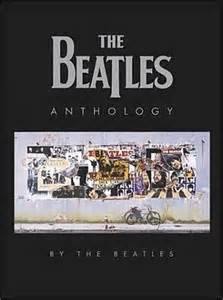 Paul elaborates more in the book "Beatles Anthology," “I didn’t know that was from the musical 'The Music Man' until many years later. This led me to songs like 'A Taste Of Honey' and things which were slightly to the left and the right of rock n' roll...I could never see the differency between a beautiful melody and a cool rock 'n' roll song. I leart to love all the ballady stuff through my dad and relatives - 'Till There Was You,' 'My Funny Valentine' - I thought these were good tunes. The fact that we wern't ashamed of those leanings meant that the band could be a bit more varied. And there was a need for that, because we played cabaret a lot...The Lennon / McCartney songwriting collaboration was forming during that period. We went on from 'Love Me Do' to writing deeper, much more intense things. So it was just as well someone didn't come up and tell us how uncool 'Till There Was You' was." Paul elaborates more in the book "Beatles Anthology," “I didn’t know that was from the musical 'The Music Man' until many years later. This led me to songs like 'A Taste Of Honey' and things which were slightly to the left and the right of rock n' roll...I could never see the differency between a beautiful melody and a cool rock 'n' roll song. I leart to love all the ballady stuff through my dad and relatives - 'Till There Was You,' 'My Funny Valentine' - I thought these were good tunes. The fact that we wern't ashamed of those leanings meant that the band could be a bit more varied. And there was a need for that, because we played cabaret a lot...The Lennon / McCartney songwriting collaboration was forming during that period. We went on from 'Love Me Do' to writing deeper, much more intense things. So it was just as well someone didn't come up and tell us how uncool 'Till There Was You' was."
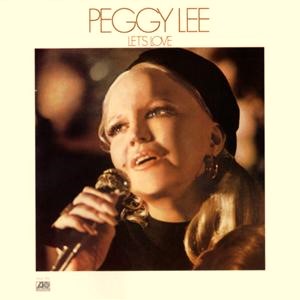 Peggy Lee’s version, with its jazz-styled lead guitar, became the basis for The Beatles' adaptation. Paul skillfully rearranged the song to suit their four-piece guitar / bass / drums lineup and perfected the song respectfully with its Broadway-esque sentimentality in the most confident way that he could. Peggy Lee continued to have an admirer in McCartney who wrote and produced the title track of her 1974 album “Let’s Love.” Peggy Lee’s version, with its jazz-styled lead guitar, became the basis for The Beatles' adaptation. Paul skillfully rearranged the song to suit their four-piece guitar / bass / drums lineup and perfected the song respectfully with its Broadway-esque sentimentality in the most confident way that he could. Peggy Lee continued to have an admirer in McCartney who wrote and produced the title track of her 1974 album “Let’s Love.”
Recording History
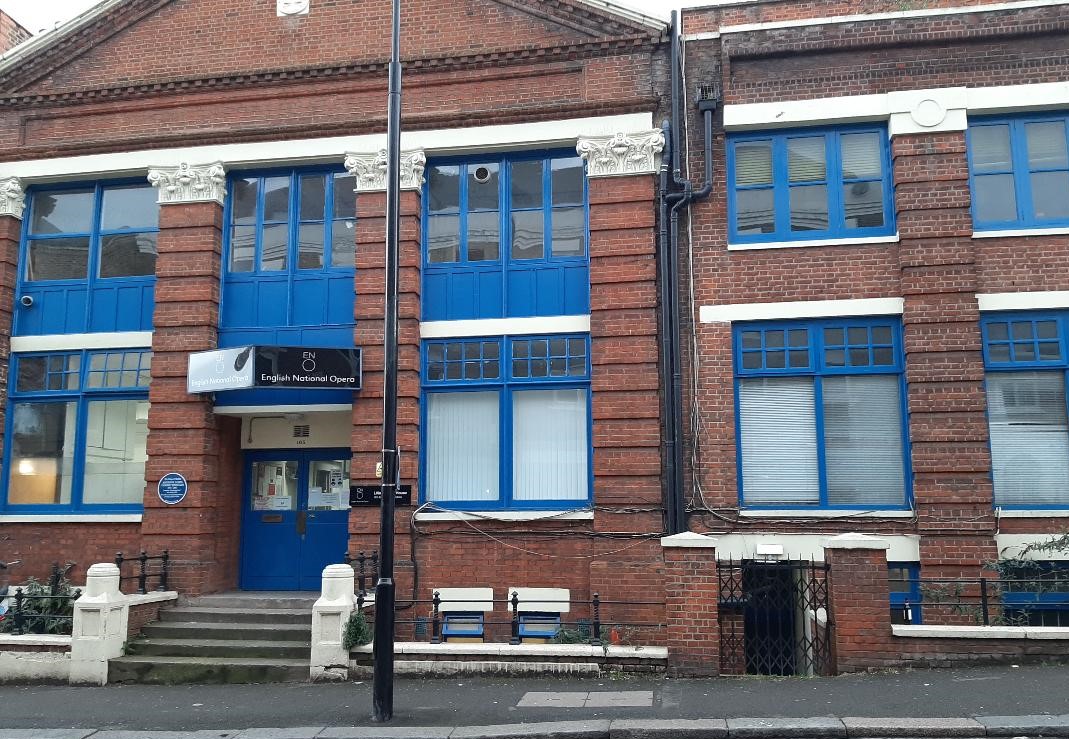 January 1st, 1962, this being the first day The Beatles entered a recording studio to record the song “Till There Was You,” was actually the very first time the group entered any proper recording studio at all. This was their audition for Decca Records at Decca Studios in London, their location being less than two miles from EMI Studios where they were to acquire their official recording contract later in the year. Manager Brian Epstein hand-picked "Till There Was You" for this audition to display the versitility of the group, this selection also being contained on a suggested song list he prepared for their initial EMI session six months later. January 1st, 1962, this being the first day The Beatles entered a recording studio to record the song “Till There Was You,” was actually the very first time the group entered any proper recording studio at all. This was their audition for Decca Records at Decca Studios in London, their location being less than two miles from EMI Studios where they were to acquire their official recording contract later in the year. Manager Brian Epstein hand-picked "Till There Was You" for this audition to display the versitility of the group, this selection also being contained on a suggested song list he prepared for their initial EMI session six months later.
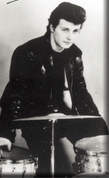 Since this hour long session at Decca Studios began at 11 am, and they recorded a total of fifteen songs in one hour, this third song was recorded at approximately 11:10 am. It seems quite likely that only one take of each song was performed on this day, so their being so well acquainted with the song came in handy. The subdued drumming of current drummer Pete Best was unsteady and rudimentary and thus did not suit the arrangement, although Paul’s vocals were respectful and convincing, right down to the raised final note. George’s guitar solo, which was repeated twice at this stage, was polished and highly impressive. Since this hour long session at Decca Studios began at 11 am, and they recorded a total of fifteen songs in one hour, this third song was recorded at approximately 11:10 am. It seems quite likely that only one take of each song was performed on this day, so their being so well acquainted with the song came in handy. The subdued drumming of current drummer Pete Best was unsteady and rudimentary and thus did not suit the arrangement, although Paul’s vocals were respectful and convincing, right down to the raised final note. George’s guitar solo, which was repeated twice at this stage, was polished and highly impressive.
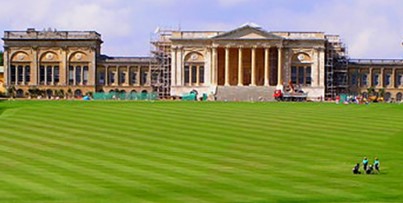 This impressive guitar solo was repeated on April 4th, 1963 at Stowe School at Roxburth Hall in Stowe where the group performed 22 songs between 6:30 to 7:30 pm. A surprisingly clear private recording of the song "Till There Was You" was made by John Bloomfield, a fifteen-year-old student in the audience of Roxburgh Hall with his trusty reel-to-reel tape recorder, this event occurring nearly three months before The Beatles officially recorded the song as released on their British album "With The Beatles." This impressive guitar solo was repeated on April 4th, 1963 at Stowe School at Roxburth Hall in Stowe where the group performed 22 songs between 6:30 to 7:30 pm. A surprisingly clear private recording of the song "Till There Was You" was made by John Bloomfield, a fifteen-year-old student in the audience of Roxburgh Hall with his trusty reel-to-reel tape recorder, this event occurring nearly three months before The Beatles officially recorded the song as released on their British album "With The Beatles."
.jpg) The Beatles then recorded "Till There Was You" three times for BBC radio, the first one being on June 1st, 1963 at BBC Paris Studio in London between 1:30 and 5:30 pm for the second edition of their radio series “Pop Go The Beatles,” which was produced by Terry Henebery and broadcast on June 11th between 5 and 5:29 pm. The song was then recorded on June 24th, 1963 at The Playhouse Theatre in London between 5:30 and 6:30 pm for the popular radio show “Saturday Club,” which was produced by Jimmy Grant and Bernie Andrews and broadcast on June 29th between 10 am and 12 noon. The Beatles then recorded "Till There Was You" three times for BBC radio, the first one being on June 1st, 1963 at BBC Paris Studio in London between 1:30 and 5:30 pm for the second edition of their radio series “Pop Go The Beatles,” which was produced by Terry Henebery and broadcast on June 11th between 5 and 5:29 pm. The song was then recorded on June 24th, 1963 at The Playhouse Theatre in London between 5:30 and 6:30 pm for the popular radio show “Saturday Club,” which was produced by Jimmy Grant and Bernie Andrews and broadcast on June 29th between 10 am and 12 noon.
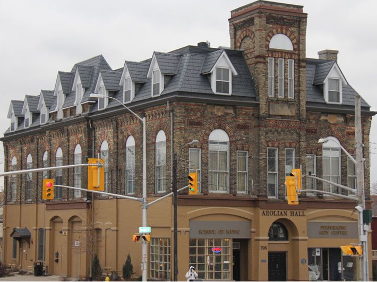 July 10th, 1963 was the third recording of the song for the BBC, this taking place in Studio Two of Aeolian Hall in London between 1:30 and 3:30 pm for the seventh edition of “Pop Go The Beatles,” which was produced by Terry Henebery and broadcast on July 30th between 5 and 5:29 pm. It is interesting to mention here that, among all of the cover songs The Beatles were recording for BBC radio broadcasts, the group then felt strong enough about "Till There Was You" to officially record it for their second British album. July 10th, 1963 was the third recording of the song for the BBC, this taking place in Studio Two of Aeolian Hall in London between 1:30 and 3:30 pm for the seventh edition of “Pop Go The Beatles,” which was produced by Terry Henebery and broadcast on July 30th between 5 and 5:29 pm. It is interesting to mention here that, among all of the cover songs The Beatles were recording for BBC radio broadcasts, the group then felt strong enough about "Till There Was You" to officially record it for their second British album.
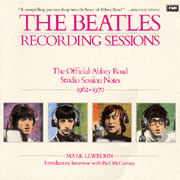 Having failed the Decca audition, the next official studio appearance of the song was on July 18th, 1963 at EMI Studio Two during their very first recording session for their second British album “With The Beatles.” "I looked at the recording scene," Paul remembers in Mark Lewisohn's book "The Beatles Recording Sessions," "and realized that a few people were taking offbeat songs, putting them into their acts and modernizing them a bit. So I looked at a few songs with that in mind. 'Till There Was You' was one; no one was doing that except Peggy Lee so I thought it'd be nice to play." At approximately 10 pm, the Beatles ran through three takes of the song, two of them complete, before deciding to return to the song on another day. The instrumentation was the same as the Decca session a year and a half earlier, this time with Ringo on the drum kit. Having failed the Decca audition, the next official studio appearance of the song was on July 18th, 1963 at EMI Studio Two during their very first recording session for their second British album “With The Beatles.” "I looked at the recording scene," Paul remembers in Mark Lewisohn's book "The Beatles Recording Sessions," "and realized that a few people were taking offbeat songs, putting them into their acts and modernizing them a bit. So I looked at a few songs with that in mind. 'Till There Was You' was one; no one was doing that except Peggy Lee so I thought it'd be nice to play." At approximately 10 pm, the Beatles ran through three takes of the song, two of them complete, before deciding to return to the song on another day. The instrumentation was the same as the Decca session a year and a half earlier, this time with Ringo on the drum kit.
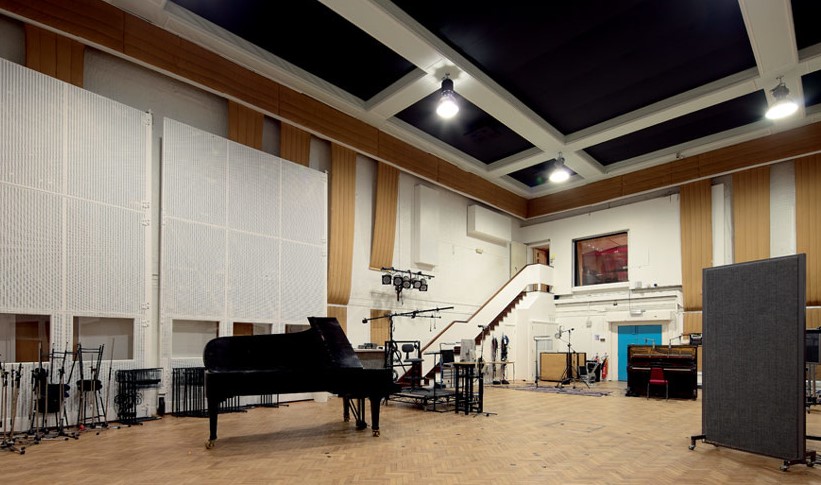 July 30th, 1963, was the date of The Beatles' official recording of the song. London's EMI Studio Two was the location for this full day of recording for their second album. The evening session ran from 5 to 11 pm which, after George Martin overdubbed piano edit pieces for “Money (That’s What I Want),” The Beatles started their remake of “Till There Was You.” It was decided, probably by George Martin, that drums were too obtrusive for this ballad, so Ringo was moved to a pair of bongos courtesy of the EMI collection. July 30th, 1963, was the date of The Beatles' official recording of the song. London's EMI Studio Two was the location for this full day of recording for their second album. The evening session ran from 5 to 11 pm which, after George Martin overdubbed piano edit pieces for “Money (That’s What I Want),” The Beatles started their remake of “Till There Was You.” It was decided, probably by George Martin, that drums were too obtrusive for this ballad, so Ringo was moved to a pair of bongos courtesy of the EMI collection.
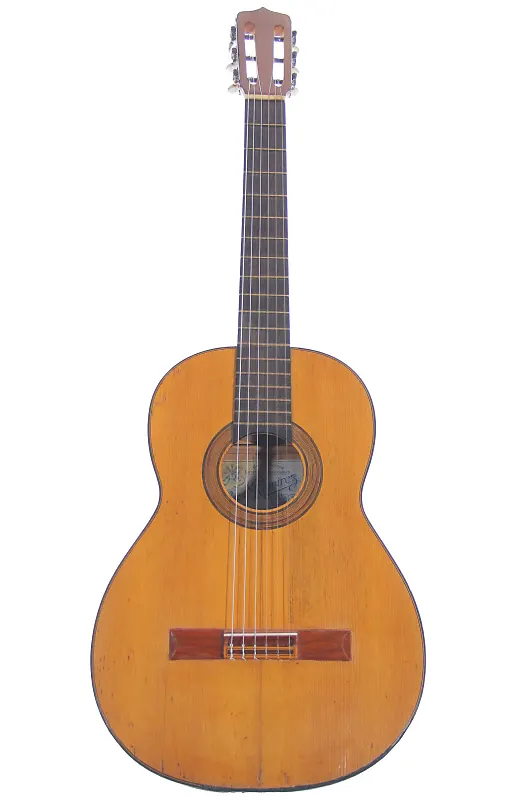 Their remake of the song ran from approximately 5:30 to 6 pm needing just five takes to perfect, which were numbered "take four" through "take eight" to take into account the three takes of the previous session. The arrangement was modified from their Decca audition to have only one guitar solo, which also eliminated the need for a further repeat of the bridge and final verse. "Take eight" was considered best, this being a full band live performance without any overdubs needed. Their remake of the song ran from approximately 5:30 to 6 pm needing just five takes to perfect, which were numbered "take four" through "take eight" to take into account the three takes of the previous session. The arrangement was modified from their Decca audition to have only one guitar solo, which also eliminated the need for a further repeat of the bridge and final verse. "Take eight" was considered best, this being a full band live performance without any overdubs needed.
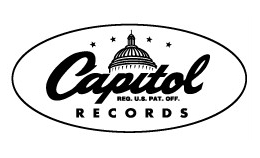 August 21st, 1963 saw the mono mix of the song being tackled, which was attended only by George Martin and engineers Norman Smith and Geoff Emerick in Studio Two of EMI. October 29th, 1963 saw the stereo mix of the song performed in Studio three with the same EMI staff present, with the addition of the mysterious B.T. as second engineer. This is the stereo mix heard on the stereo version of "Meet The Beatles!" as well as the mono version because of Capitol Records choosing to create a mono "Type B" mix down of the stereo mix. August 21st, 1963 saw the mono mix of the song being tackled, which was attended only by George Martin and engineers Norman Smith and Geoff Emerick in Studio Two of EMI. October 29th, 1963 saw the stereo mix of the song performed in Studio three with the same EMI staff present, with the addition of the mysterious B.T. as second engineer. This is the stereo mix heard on the stereo version of "Meet The Beatles!" as well as the mono version because of Capitol Records choosing to create a mono "Type B" mix down of the stereo mix.
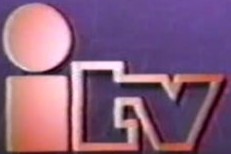 The Beatles recorded "Till There Was You" five more times for BBC radio, the first being on September 3rd, 1963 in Studio Two of Aeolian Hall in London between 2 and 4:30 pm for the thirteenth edition of “Pop Go The Beatles,” which was produced by Terry Henebery and broadcast on September 10th, 1963 between 5 and 5:29 pm. Then came the "Royal Command Performance" recording of the song on November 4th, 1963 at the Prince Of Wales Theatre in London, this being broadcast on the BBC Radio Light Programme on November 10th between 7:35 and 8:30 pm, as well as on ITV British television that same day. The Beatles recorded "Till There Was You" five more times for BBC radio, the first being on September 3rd, 1963 in Studio Two of Aeolian Hall in London between 2 and 4:30 pm for the thirteenth edition of “Pop Go The Beatles,” which was produced by Terry Henebery and broadcast on September 10th, 1963 between 5 and 5:29 pm. Then came the "Royal Command Performance" recording of the song on November 4th, 1963 at the Prince Of Wales Theatre in London, this being broadcast on the BBC Radio Light Programme on November 10th between 7:35 and 8:30 pm, as well as on ITV British television that same day.
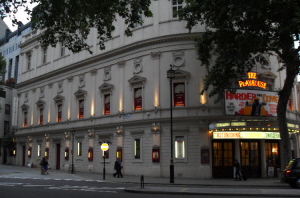 Then on December 17th, 1963, the group recorded the song at The Playhouse Theatre in London between 3 and 6:30 pm for “Saturday Club,” which aired on December 21st between 10 am and 12 noon. They recorded the song again the following day, December 18th, 1963, at BBC Paris Studio in London between 7 and 10:30 pm for the first edition of their new radio show “From Us To You,” which was produced by Bryant Marriott and broadcast on December 26th between 10 am and 12 noon. Their February 28th, 1964 recording of the song in Studio One of BBC Piccadilly Studios in London between 6:30 and 9 pm was produced by Bryant Marriott and was broadcast on the second installment of the radio show “From Us To You” on March 30th of that year. Then on December 17th, 1963, the group recorded the song at The Playhouse Theatre in London between 3 and 6:30 pm for “Saturday Club,” which aired on December 21st between 10 am and 12 noon. They recorded the song again the following day, December 18th, 1963, at BBC Paris Studio in London between 7 and 10:30 pm for the first edition of their new radio show “From Us To You,” which was produced by Bryant Marriott and broadcast on December 26th between 10 am and 12 noon. Their February 28th, 1964 recording of the song in Studio One of BBC Piccadilly Studios in London between 6:30 and 9 pm was produced by Bryant Marriott and was broadcast on the second installment of the radio show “From Us To You” on March 30th of that year.
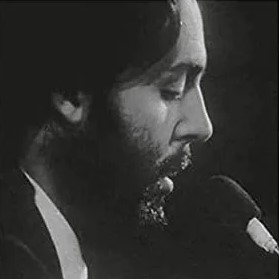 The Beatles did touch on the song one more time on January 10th, 1969, during the recording / filming sessions for the "Get Back / Let It Be" project. This took place at Twickenham Film Studios but did not appear in the movie or soundtrack album. The Beatles did touch on the song one more time on January 10th, 1969, during the recording / filming sessions for the "Get Back / Let It Be" project. This took place at Twickenham Film Studios but did not appear in the movie or soundtrack album.
Song Structure and Style
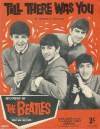 The song structure of “Till There Was You” could very well have been the model used by Lennon and McCartney for their early songwriting years, this being the perfect song structure example for that time period. We see here that classic case of 'verse/ verse/ bridge/ verse' (or aaba) with the title of the song at the end of each verse used as a hook-line identifying without any doubt what the title of the song is, as well as the obvious intent of the lyric story. This identical model was incorporated to excellent effect in Lennon / McCartney originals up until this time, such as in “I Saw Her Standing There,” “Misery” and “From Me To You,” and would also continue to be utilized and expanded upon throughout their career. In this case, though, a solo section is included, which is played over the verse chords as is standard, followed by another bridge and then a repetition of the final verse. The song structure of “Till There Was You” could very well have been the model used by Lennon and McCartney for their early songwriting years, this being the perfect song structure example for that time period. We see here that classic case of 'verse/ verse/ bridge/ verse' (or aaba) with the title of the song at the end of each verse used as a hook-line identifying without any doubt what the title of the song is, as well as the obvious intent of the lyric story. This identical model was incorporated to excellent effect in Lennon / McCartney originals up until this time, such as in “I Saw Her Standing There,” “Misery” and “From Me To You,” and would also continue to be utilized and expanded upon throughout their career. In this case, though, a solo section is included, which is played over the verse chords as is standard, followed by another bridge and then a repetition of the final verse.
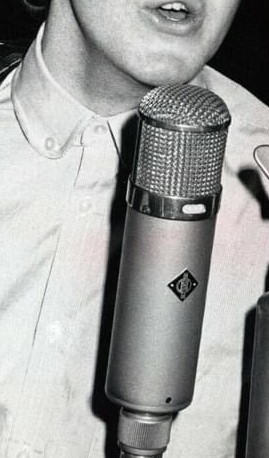 The song begins with a four measure instrumental intro with some raising guitar chords and a simple but effective precursor to the solo we will hear from George Harrison a little later in the song. The first verse begins with Paul’s convincing vocal work. This first verse differs from the others in structure only by its raised ending phrase, which creates anticipation for verse that comes afterward. The eight measure bridge creates an interesting contrast with its octave jump in the melody line, which reveals Paul’s vocal abilities. The next transition back to another verse creates quite a satisfying feeling to the arrangement, as the structure's ending makes you feel that everything has been said. Harrison’s beautiful guitar solo is then heard against the chord structure of a verse, which is then followed by a repeat of the bridge and third verse. A six measure conclusion to the song follows the final verse, emphasizing once again the song's title, with the final note dramatically held through two chord changes before the final acoustic guitar strum ends the song with a delicate touch of finality. This, therefore, is a masterful example of songwriting created by a classic songwriter with much experience under his belt. The song begins with a four measure instrumental intro with some raising guitar chords and a simple but effective precursor to the solo we will hear from George Harrison a little later in the song. The first verse begins with Paul’s convincing vocal work. This first verse differs from the others in structure only by its raised ending phrase, which creates anticipation for verse that comes afterward. The eight measure bridge creates an interesting contrast with its octave jump in the melody line, which reveals Paul’s vocal abilities. The next transition back to another verse creates quite a satisfying feeling to the arrangement, as the structure's ending makes you feel that everything has been said. Harrison’s beautiful guitar solo is then heard against the chord structure of a verse, which is then followed by a repeat of the bridge and third verse. A six measure conclusion to the song follows the final verse, emphasizing once again the song's title, with the final note dramatically held through two chord changes before the final acoustic guitar strum ends the song with a delicate touch of finality. This, therefore, is a masterful example of songwriting created by a classic songwriter with much experience under his belt.
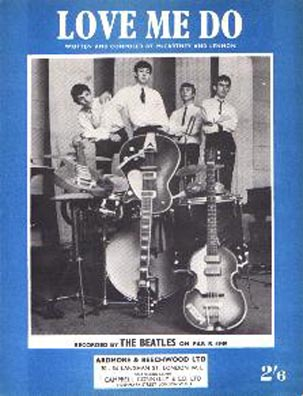 For aspiring songwriters such as The Beatles, much could be absorbed from this model, as has been the case. In the "Beatles Anthology" book, Paul explained, “The Lennon / McCartney songwriting collaboration was forming during that period. We went on from ‘Love Me Do’ to writing deeper, much more intense things. So it was just as well someone didn’t come up and tell us how uncool ‘Till There Was You’ was.” For aspiring songwriters such as The Beatles, much could be absorbed from this model, as has been the case. In the "Beatles Anthology" book, Paul explained, “The Lennon / McCartney songwriting collaboration was forming during that period. We went on from ‘Love Me Do’ to writing deeper, much more intense things. So it was just as well someone didn’t come up and tell us how uncool ‘Till There Was You’ was.”
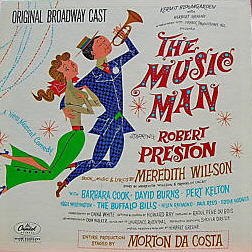 The lyrics, although perfectly suited to “The Music Man” as well as to the time period, come across as particularly schmaltzy within The Beatles' catalog. The sentimentality conveyed here, with lines such as “wonderful roses” and “fragrant meadows of dawn and dew,” sound extremely dated compared to the youth-oriented “yeah, yeah, yeah”s most Beatle fans were used to hearing at this time. Keeping in mind the purpose of the inclusion of this song in their repertoire, The Beatles overlooked the old fashioned lyrics in order to show their versatility as well as to impress an older generation. The lyrics, although perfectly suited to “The Music Man” as well as to the time period, come across as particularly schmaltzy within The Beatles' catalog. The sentimentality conveyed here, with lines such as “wonderful roses” and “fragrant meadows of dawn and dew,” sound extremely dated compared to the youth-oriented “yeah, yeah, yeah”s most Beatle fans were used to hearing at this time. Keeping in mind the purpose of the inclusion of this song in their repertoire, The Beatles overlooked the old fashioned lyrics in order to show their versatility as well as to impress an older generation.
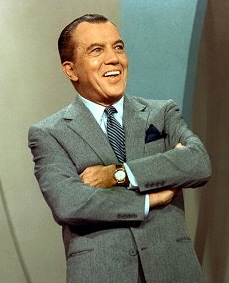 Not to say that The Beatles couldn’t poke a little fun at the extreme schmaltz of the lyrics, evident in the over-pronunciation of the “c” of the word ‘music’ on their Decca version of the song, as well as the American-ized pronunciation of the word “saw” as “sar” in the released version. Paul continued this ruse during 1963, as later evidenced on the “Royal Variety Performance” in November, but relented to the seriousness of their American premier on “The Ed Sullivan Show” in 1964 to sing it straight. Not to say that The Beatles couldn’t poke a little fun at the extreme schmaltz of the lyrics, evident in the over-pronunciation of the “c” of the word ‘music’ on their Decca version of the song, as well as the American-ized pronunciation of the word “saw” as “sar” in the released version. Paul continued this ruse during 1963, as later evidenced on the “Royal Variety Performance” in November, but relented to the seriousness of their American premier on “The Ed Sullivan Show” in 1964 to sing it straight.
 The song's lyrics express the simple sentiment of not having been able to enjoy the beauty of life, such as bells ringing and birds “winging,” until the singer met his/her true love. As the bridge testifies, “music” was then realized for the first time, as well as finally noticing “love all around” the singer that was never noticed “till there was you.” Hardly the example of storytelling that appeared in popular songwriting of the mid '60s, but a prime model of what a perfectly suited set of lyrics can convey with the suitable melody to accompany it. It definitely tugs at the heart-strings in its context of “The Music Man.” The song's lyrics express the simple sentiment of not having been able to enjoy the beauty of life, such as bells ringing and birds “winging,” until the singer met his/her true love. As the bridge testifies, “music” was then realized for the first time, as well as finally noticing “love all around” the singer that was never noticed “till there was you.” Hardly the example of storytelling that appeared in popular songwriting of the mid '60s, but a prime model of what a perfectly suited set of lyrics can convey with the suitable melody to accompany it. It definitely tugs at the heart-strings in its context of “The Music Man.”
 As stated earlier, McCartney’s vocals are "spot on" as to pitch, as well as sung in a respectable and convincing manner. His bass work, which shows up higher in the mix because of the subdued acoustic arrangement, is well performed throughout while not too much straying from the key notes occurs, except where the guitar solo is played. This allowed him to concentrate on adding a little more intrcacy, since the song was recorded straight without any overdubs and he wasn’t singing during the solo. As stated earlier, McCartney’s vocals are "spot on" as to pitch, as well as sung in a respectable and convincing manner. His bass work, which shows up higher in the mix because of the subdued acoustic arrangement, is well performed throughout while not too much straying from the key notes occurs, except where the guitar solo is played. This allowed him to concentrate on adding a little more intrcacy, since the song was recorded straight without any overdubs and he wasn’t singing during the solo.
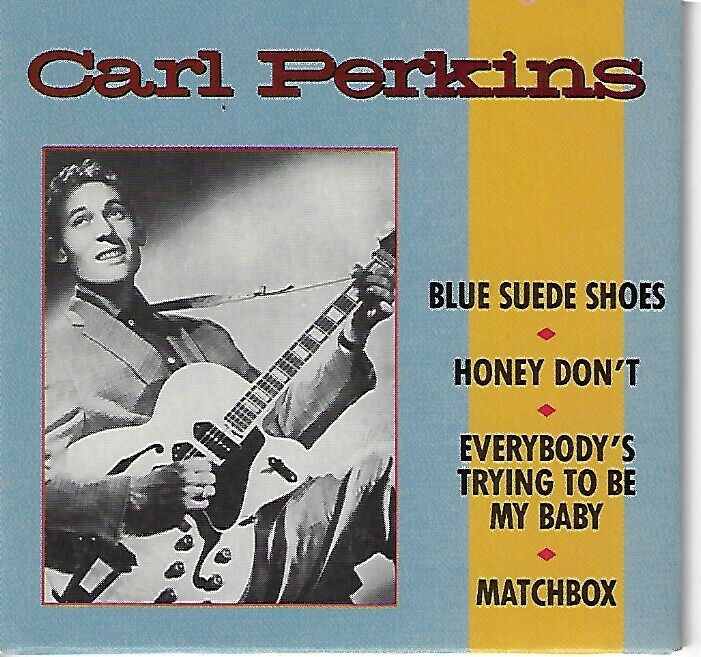 Harrison is next to be admired because of his tastefully conceived and executed acoustic guitar solo. Second only to his being able to imitate his guitar hero Carl Perkins, he shines the greatest on this track out of all of the early Beatles catalog. He also adds little nuances throughout the song which add a great degree of credibility to his musicianship and to The Beatles as a whole. Harrison is next to be admired because of his tastefully conceived and executed acoustic guitar solo. Second only to his being able to imitate his guitar hero Carl Perkins, he shines the greatest on this track out of all of the early Beatles catalog. He also adds little nuances throughout the song which add a great degree of credibility to his musicianship and to The Beatles as a whole.
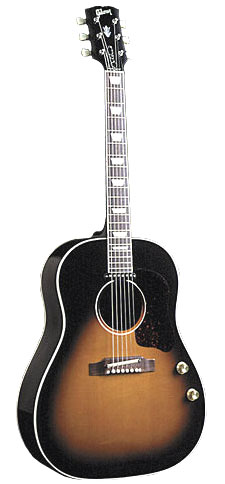 After ditching the idea of using the full drum kit arrangement as utilized by Pete Best in the Decca audition, Ringo pulls off a capable and very suitable percussion part on the bongos. It is interesting to note that Ringo played a full drum kit in a subdued fashion when they performed the song live, which was done proficiently without the awkwardness apparent in the Pete Best version on the Decca audition. Lennon, playing strident rhythm guitar chords, shows himself adept at applying himself to what may otherwise be not his "cup of tea." As explained above by Paul, “The fact that we weren’t ashamed of those leanings meant that the band could be a bit more varied.” After ditching the idea of using the full drum kit arrangement as utilized by Pete Best in the Decca audition, Ringo pulls off a capable and very suitable percussion part on the bongos. It is interesting to note that Ringo played a full drum kit in a subdued fashion when they performed the song live, which was done proficiently without the awkwardness apparent in the Pete Best version on the Decca audition. Lennon, playing strident rhythm guitar chords, shows himself adept at applying himself to what may otherwise be not his "cup of tea." As explained above by Paul, “The fact that we weren’t ashamed of those leanings meant that the band could be a bit more varied.”
 Capitol's "Meet The Beatles" album
|
American Releases
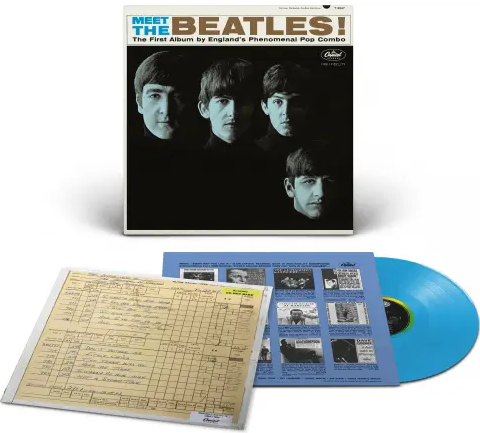 January 20th, 1964, was the first US Beatles release date of their rendition of "Till There Was You" on Capitol's "Meet The Beatles!" album, this being the only selection from a Broadway show that the group ever officially recorded or released. Incidentally, as detailed above, mono copies of this album contained a "Type B" foldover mix of the song created by Capitol that combined both channels of the stereo mix instead of the legitimate mono mix created by George Martin. This album was finally released on an individual compact disc on January 21st, 2014, both the mono and stereo mixes being contained on a single CD. A mono edition of the album on opaque blue vinyl was then released on November 22nd, 2024 for sale exclusively at Target stores. January 20th, 1964, was the first US Beatles release date of their rendition of "Till There Was You" on Capitol's "Meet The Beatles!" album, this being the only selection from a Broadway show that the group ever officially recorded or released. Incidentally, as detailed above, mono copies of this album contained a "Type B" foldover mix of the song created by Capitol that combined both channels of the stereo mix instead of the legitimate mono mix created by George Martin. This album was finally released on an individual compact disc on January 21st, 2014, both the mono and stereo mixes being contained on a single CD. A mono edition of the album on opaque blue vinyl was then released on November 22nd, 2024 for sale exclusively at Target stores.
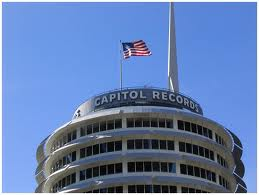 Although Capitol Records decided back in 1964 to omit cover songs on their first American album, thinking that US audiences would not be interested in hearing a British group redo American hits, they did let this song through, probably based on their knowledge that The Beatles were due to perform "Till There Was You" on the upcoming Ed Sullivan Show. Showing the versatility of the group may also have been a determining factor in including the song on the album. Although Capitol Records decided back in 1964 to omit cover songs on their first American album, thinking that US audiences would not be interested in hearing a British group redo American hits, they did let this song through, probably based on their knowledge that The Beatles were due to perform "Till There Was You" on the upcoming Ed Sullivan Show. Showing the versatility of the group may also have been a determining factor in including the song on the album.
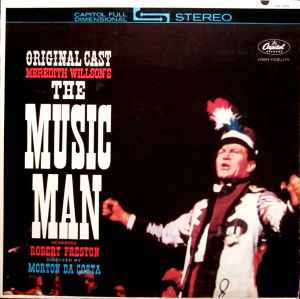 Unfortunately, this great performance wasn't considered by anyone at EMI to be of enough lasting value to be included on any compilation or "greatest hits" album to date. In retrospect, it probably was just as well because of the old-fashioned nature of the song in contrast to the swinging "beat" style that the early Beatles' catalog is known for. Nonetheless, Elizabeth "Peggy" Willson, the widow of the song's composer Meredith Willson, stated that her husband's estate eventually received more income from The Beatles' version of "Till There Was You" than what the song received as part of "The Music Man." Unfortunately, this great performance wasn't considered by anyone at EMI to be of enough lasting value to be included on any compilation or "greatest hits" album to date. In retrospect, it probably was just as well because of the old-fashioned nature of the song in contrast to the swinging "beat" style that the early Beatles' catalog is known for. Nonetheless, Elizabeth "Peggy" Willson, the widow of the song's composer Meredith Willson, stated that her husband's estate eventually received more income from The Beatles' version of "Till There Was You" than what the song received as part of "The Music Man."
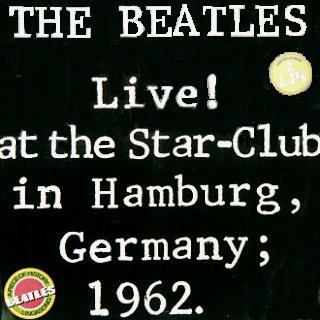 There were, however, other Beatles releases that contained the song. The somewhat controversial album “Live! At the Star Club in Hamburg, Germany 1962,” released on Lingasong Records on June 13th, 1977, included The Beatles performing “Till There Was You.” The group's final reluctant performances in Hamburg during the 1962 Christmas season were crudely recorded on a Grundig home tape recorder and, after changing many hands, commercially released in 1977 on this album, after a failed attempt from Apple Records to prevent the release. There were, however, other Beatles releases that contained the song. The somewhat controversial album “Live! At the Star Club in Hamburg, Germany 1962,” released on Lingasong Records on June 13th, 1977, included The Beatles performing “Till There Was You.” The group's final reluctant performances in Hamburg during the 1962 Christmas season were crudely recorded on a Grundig home tape recorder and, after changing many hands, commercially released in 1977 on this album, after a failed attempt from Apple Records to prevent the release.
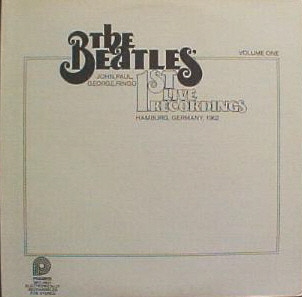 These recordings were then licensed to Pickwick Records in 1978, the label supposedly cleaning up the tapes somewhat and releasing three volumes of albums entitled "Recorded Live In Hamburg 1962" sometime in 1978. This primitive Beatles recording of "Till There Was You" was contained on "Volume 1" of this set of albums. Pickwick then repackaged the recordings into two volumes in 1979, “1st Live Recordings, Volume One” featuring this track. Pickwick then combined both of these volumes into a double-album (featuring "Till There Was You") entitled "The Historic First Live Recordings," which was released in 1980. Then the label Hall Of Music also released these Hamburg tapes as "Live - 1962 - Hamburg Germany" in 1981. These recordings were then licensed to Pickwick Records in 1978, the label supposedly cleaning up the tapes somewhat and releasing three volumes of albums entitled "Recorded Live In Hamburg 1962" sometime in 1978. This primitive Beatles recording of "Till There Was You" was contained on "Volume 1" of this set of albums. Pickwick then repackaged the recordings into two volumes in 1979, “1st Live Recordings, Volume One” featuring this track. Pickwick then combined both of these volumes into a double-album (featuring "Till There Was You") entitled "The Historic First Live Recordings," which was released in 1980. Then the label Hall Of Music also released these Hamburg tapes as "Live - 1962 - Hamburg Germany" in 1981.
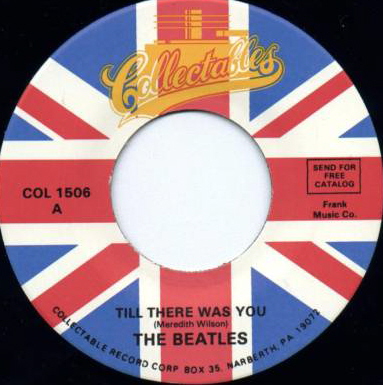 1982 also saw another release of the Hamburg recording of "Till There Was You," this time as a single. Collectables Records paired the song with their Hamburg rendition of "Everybody's Trying To Be My Baby" as the b-side. 1982 also saw another release of the Hamburg recording of "Till There Was You," this time as a single. Collectables Records paired the song with their Hamburg rendition of "Everybody's Trying To Be My Baby" as the b-side.
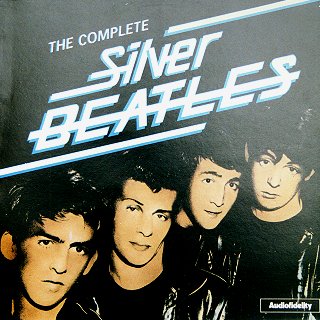 In the '80s, many small labels gained access to the Beatles' January 1st, 1962 Decca audition and took their chances with releasing it commercially, these featuring "Till There Was You" with Pete Best on drums. The first appears to be "Dawn Of The Silver Beatles" on Pac Records, this being released sometime in 1981. Then came the album "Like Dreamers Do" as released on Backstage Records in May of 1982, this appearing as both a conventional vinyl album and as a picture disc, a 1982 interview with Pete Best and mid '60s interviews with The Beatles included. Also in 1982, the Audio Rarities label released the album "Silver Beatles," which featured the same Decca audition. Audio-Fidelity Records released the album "The Complete Silver Beatles" on September 10th, 1982, a single from this album, complete with picture sleeve, being released in October of that year, which features "Till There Was You” as the b-side along with "Money (That's What I Want)." In the '80s, many small labels gained access to the Beatles' January 1st, 1962 Decca audition and took their chances with releasing it commercially, these featuring "Till There Was You" with Pete Best on drums. The first appears to be "Dawn Of The Silver Beatles" on Pac Records, this being released sometime in 1981. Then came the album "Like Dreamers Do" as released on Backstage Records in May of 1982, this appearing as both a conventional vinyl album and as a picture disc, a 1982 interview with Pete Best and mid '60s interviews with The Beatles included. Also in 1982, the Audio Rarities label released the album "Silver Beatles," which featured the same Decca audition. Audio-Fidelity Records released the album "The Complete Silver Beatles" on September 10th, 1982, a single from this album, complete with picture sleeve, being released in October of that year, which features "Till There Was You” as the b-side along with "Money (That's What I Want)."
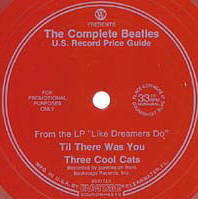 Evatone Records sponsored a limited edition release of the Decca recording of "Till There Was You" in 1983. This flexi-disc, which also included their Decca version of "Three Cool Cats" on the same side of the record, was given away to customers who purchased a recent US Record Price Guide. Printing on the disc states "From the LP 'Like Dreamers Do,'" which refers to the May 1982 released album of the same name on Backstage Records mentioned above. Evatone Records sponsored a limited edition release of the Decca recording of "Till There Was You" in 1983. This flexi-disc, which also included their Decca version of "Three Cool Cats" on the same side of the record, was given away to customers who purchased a recent US Record Price Guide. Printing on the disc states "From the LP 'Like Dreamers Do,'" which refers to the May 1982 released album of the same name on Backstage Records mentioned above.
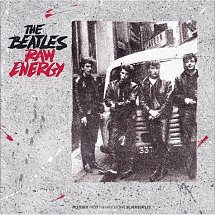
Then, in January of 1987 when music enthusiasts were anxiously awaiting the official release of The Beatles catalog on compact disc, Romance Records released the CD "Raw Energy" which also contained The Beatles' Decca audition of "Till There Was You." Lawsuits were filed afterward and, since the true ownership of these tapes haven't been determined, the complete set of these 15 songs have not been officially available in full as of this date. However, Apple Records received permission to release a handful of these tracks on their “Anthology 1” album, but “Till There Was You” was not included.
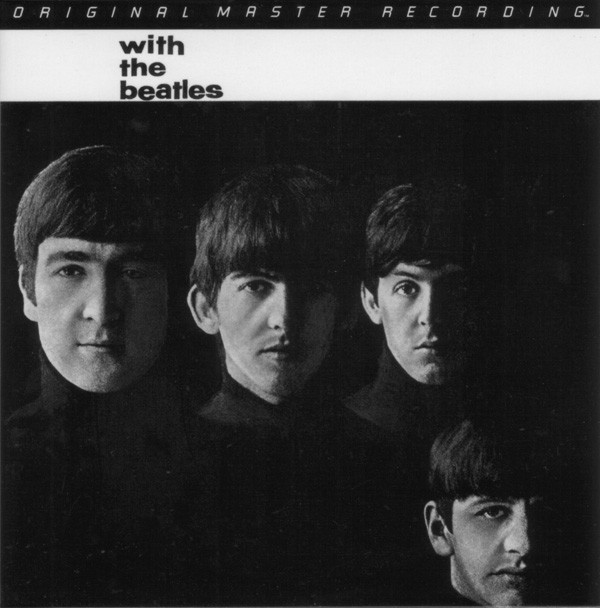 The first time the original British "With The Beatles" album was made available in the US was the "Original Master Recording" vinyl edition that was released through Mobile Fidelity Sound Lab in January of 1987. This album included "Till There Was You" and was prepared by utilizing half-speed mastering technology from the original master tape on loan from EMI. This title had a limited production, reportedly because of a damaged metal part that was needed for pressing the vinyl. Therefore, this album is said to be the rarest and most valuable Beatles album in the “Original Master Recording” series. The first time the original British "With The Beatles" album was made available in the US was the "Original Master Recording" vinyl edition that was released through Mobile Fidelity Sound Lab in January of 1987. This album included "Till There Was You" and was prepared by utilizing half-speed mastering technology from the original master tape on loan from EMI. This title had a limited production, reportedly because of a damaged metal part that was needed for pressing the vinyl. Therefore, this album is said to be the rarest and most valuable Beatles album in the “Original Master Recording” series.
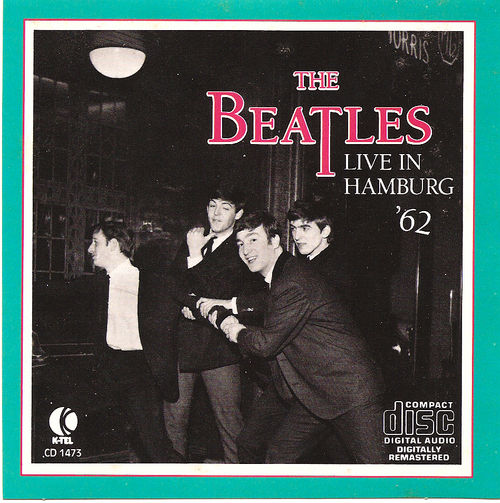 With the dawning of the compact disc era in the 80's, music fans were eagerly waiting for the delayed release of the Beatles catalog on CD. K-Tel Records thought to cash in on all this expectation by releasing "Live In Hamburg '62" in early February 1987, which was just prior to the release of the first four Beatles albums by Apple Records. Many Beatles enthusiasts couldn't resist owning a live CD by their favorite group that featured 20 tracks including "Till There Was You," not realizing that this was such a lo-fi rough recording as released many times before on vinyl, as detailed above. With the dawning of the compact disc era in the 80's, music fans were eagerly waiting for the delayed release of the Beatles catalog on CD. K-Tel Records thought to cash in on all this expectation by releasing "Live In Hamburg '62" in early February 1987, which was just prior to the release of the first four Beatles albums by Apple Records. Many Beatles enthusiasts couldn't resist owning a live CD by their favorite group that featured 20 tracks including "Till There Was You," not realizing that this was such a lo-fi rough recording as released many times before on vinyl, as detailed above.
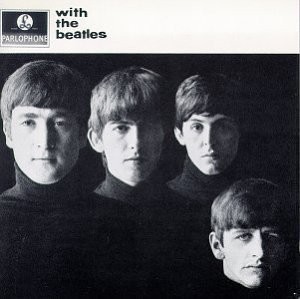 February 26th, 1987 saw the song on the original British LP "With The Beatles" released on compact disc for the first time, a vinyl edition of this album being released on July 21st, 1987. While these releases were mono only, a remastered stereo version on compact disc was released on September 9th, 2009, a vinyl stereo edition coming out on November 13th, 2012. February 26th, 1987 saw the song on the original British LP "With The Beatles" released on compact disc for the first time, a vinyl edition of this album being released on July 21st, 1987. While these releases were mono only, a remastered stereo version on compact disc was released on September 9th, 2009, a vinyl stereo edition coming out on November 13th, 2012.
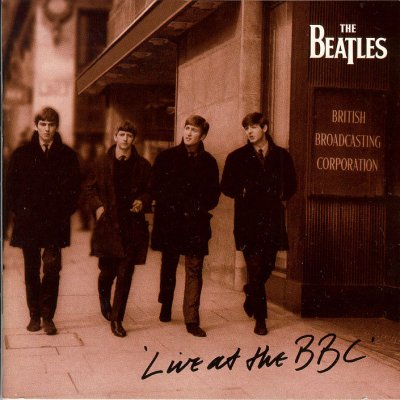 December 6th, 1994, did see another release of the song on the album “Live At The BBC.” Recorded February 28th, 1964 for the BBC broadcast “From Us To You,” it originally aired on March 30th, 1964 and is included as the final track of the first disc of this double CD set. A remastered and re-packaged version of this album was released on November 11th, 2013. December 6th, 1994, did see another release of the song on the album “Live At The BBC.” Recorded February 28th, 1964 for the BBC broadcast “From Us To You,” it originally aired on March 30th, 1964 and is included as the final track of the first disc of this double CD set. A remastered and re-packaged version of this album was released on November 11th, 2013.
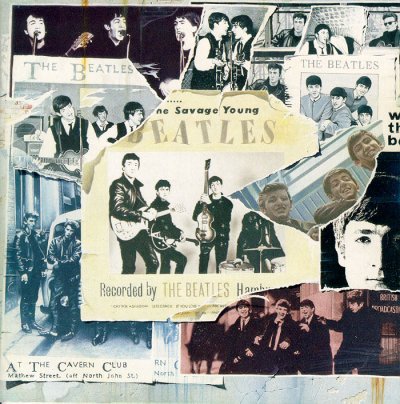 The next US release of the song was on November 21st, 1995 on the album “Anthology 1.” This historic November 4th, 1963 live rendition recorded at the “Royal Command Performance” included Paul’s introductory speech before the song, including his acknowledgement of its appearance in “The Music Man” and his quick joke about the song also being recorded by “our favorite American group, Sophie Tucker,” which was a sly reference to her being overweight. The next US release of the song was on November 21st, 1995 on the album “Anthology 1.” This historic November 4th, 1963 live rendition recorded at the “Royal Command Performance” included Paul’s introductory speech before the song, including his acknowledgement of its appearance in “The Music Man” and his quick joke about the song also being recorded by “our favorite American group, Sophie Tucker,” which was a sly reference to her being overweight.
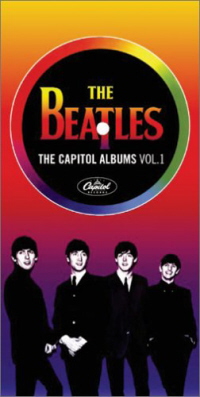 November 15th, 2004 saw the release of the CD box set “The Capitol Albums, Vol. 1” which contains the song in both stereo and "type B" foldover mono as contained on the original "Meet The Beatles!" album. November 15th, 2004 saw the release of the CD box set “The Capitol Albums, Vol. 1” which contains the song in both stereo and "type B" foldover mono as contained on the original "Meet The Beatles!" album.
On September 9th, 2009, the CD box set “The Beatles In Mono” was released which featured the newly remastered mono mix of "Till There Was You." The vinyl edition came out on September 9th, 2014.
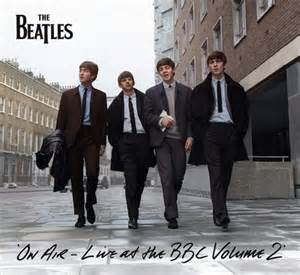 Yet another version of this song was featured on the album "On Air - Live At The BBC Volume 2," which was released on November 11th, 2013. This version was recorded on July 10th, 1963 (nearly three weeks before their album version was recorded) for the radio program "Pop Go The Beatles." Notice George's amazingly fluent guitar solo as well as the final vocal flourish from Paul that was unlike their official version. Also released around this date was a fourteen-track sampler of the above album for promotional purposes, "Till There Was You" being included therein. Yet another version of this song was featured on the album "On Air - Live At The BBC Volume 2," which was released on November 11th, 2013. This version was recorded on July 10th, 1963 (nearly three weeks before their album version was recorded) for the radio program "Pop Go The Beatles." Notice George's amazingly fluent guitar solo as well as the final vocal flourish from Paul that was unlike their official version. Also released around this date was a fourteen-track sampler of the above album for promotional purposes, "Till There Was You" being included therein.
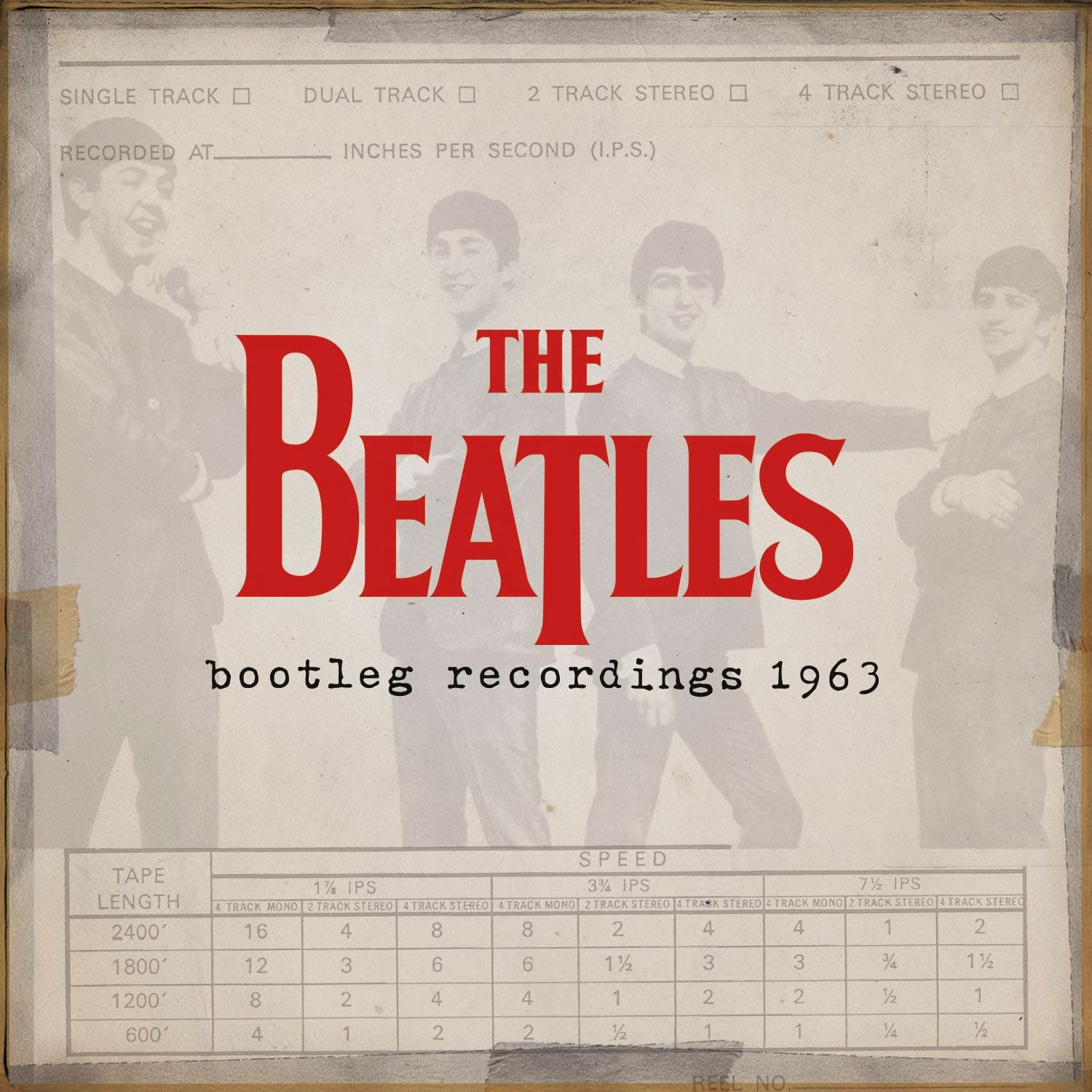 On December 17th, 2013, iTunes released the 59 track compilation album entitled "Bootleg Recordings 1963," which was available only on their downloading platform. Three versions of "Till There Was You" are included on this album, which are the December 21st, 1963 recording for the "Saturday Club" program, the June 11th, 1963 version for the show "Pop Go The Beatles," and the December 26th, 1963 version recorded for the program "From Us To You." The purpose of this release was to extend the copyright of these recordings under European Union law from 50 years (which would have expired at the end of 2013) to 70 years (until 2033), this being considered an official release. This compilation album was only available in the US on that date to those in the know for a number of hours for $39.99 in its entirety or to be purchased as individual tracks, but was later made available for purchase as well. On December 17th, 2013, iTunes released the 59 track compilation album entitled "Bootleg Recordings 1963," which was available only on their downloading platform. Three versions of "Till There Was You" are included on this album, which are the December 21st, 1963 recording for the "Saturday Club" program, the June 11th, 1963 version for the show "Pop Go The Beatles," and the December 26th, 1963 version recorded for the program "From Us To You." The purpose of this release was to extend the copyright of these recordings under European Union law from 50 years (which would have expired at the end of 2013) to 70 years (until 2033), this being considered an official release. This compilation album was only available in the US on that date to those in the know for a number of hours for $39.99 in its entirety or to be purchased as individual tracks, but was later made available for purchase as well.
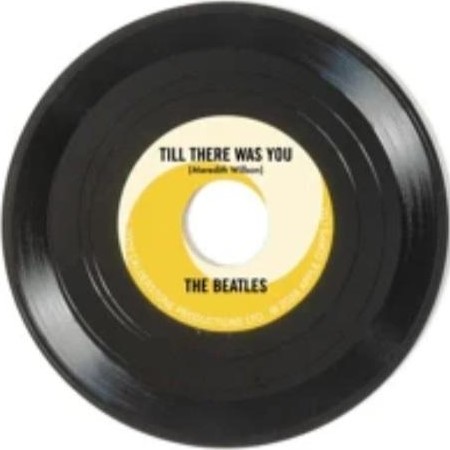 On April 20th, 2024, Apple Records released "Till There Was You" as one of four 3" singles on Record Store Day as an "RSD Exclusive Release." Only 1500 copies each were made of these limited edition releases which can only be played on 3" turntables, Crosley Manufacturing also releasing a limited edition package on this day including a special Beatles Mini Turntable, record carrying case and all four Beatles singles. These releases were made in celebration of the 60th Anniversary of The Beatles' first appearance on the Ed Sullivan Show on February 9th, 1964. On April 20th, 2024, Apple Records released "Till There Was You" as one of four 3" singles on Record Store Day as an "RSD Exclusive Release." Only 1500 copies each were made of these limited edition releases which can only be played on 3" turntables, Crosley Manufacturing also releasing a limited edition package on this day including a special Beatles Mini Turntable, record carrying case and all four Beatles singles. These releases were made in celebration of the 60th Anniversary of The Beatles' first appearance on the Ed Sullivan Show on February 9th, 1964.
Live Performances
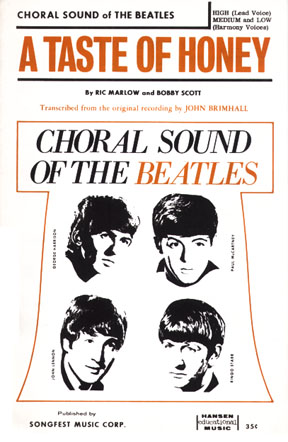 Evidence suggests that The Beatles added “Till There Was You” to their repertoire sometime in early 1961 during their extensive recidency at the Cavern Club. Paul would humorously introduce the song as by "Peggy Leg" while John poked fun at him on stage for singing such an unconventional song, at times announcing the song as being from the musical "The Muscle Man," something Paul took in stride knowing it was all part of the act. “We were now playing better places,” McCartney explained, saying that they could now “pull out ‘Till There Was You’ or ‘A Taste Of Honey’ – the more cabaret things” at these slightly higher paying gigs. Songs like these “showed that we weren’t just another rock’n’roll group,” says McCartney. Evidence suggests that The Beatles added “Till There Was You” to their repertoire sometime in early 1961 during their extensive recidency at the Cavern Club. Paul would humorously introduce the song as by "Peggy Leg" while John poked fun at him on stage for singing such an unconventional song, at times announcing the song as being from the musical "The Muscle Man," something Paul took in stride knowing it was all part of the act. “We were now playing better places,” McCartney explained, saying that they could now “pull out ‘Till There Was You’ or ‘A Taste Of Honey’ – the more cabaret things” at these slightly higher paying gigs. Songs like these “showed that we weren’t just another rock’n’roll group,” says McCartney.
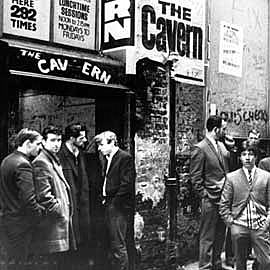 They continued to perform the song at their Cavern Club dates as well as their other daily bookings throughout 1962 and 1963. “The Beatles Christmas Show,” the British stage production conceived by Brian Epstein, included the song in each of its 16 nights which ran from December 24th, 1963 through January 11th, 1964. They continued to perform the song at their Cavern Club dates as well as their other daily bookings throughout 1962 and 1963. “The Beatles Christmas Show,” the British stage production conceived by Brian Epstein, included the song in each of its 16 nights which ran from December 24th, 1963 through January 11th, 1964.
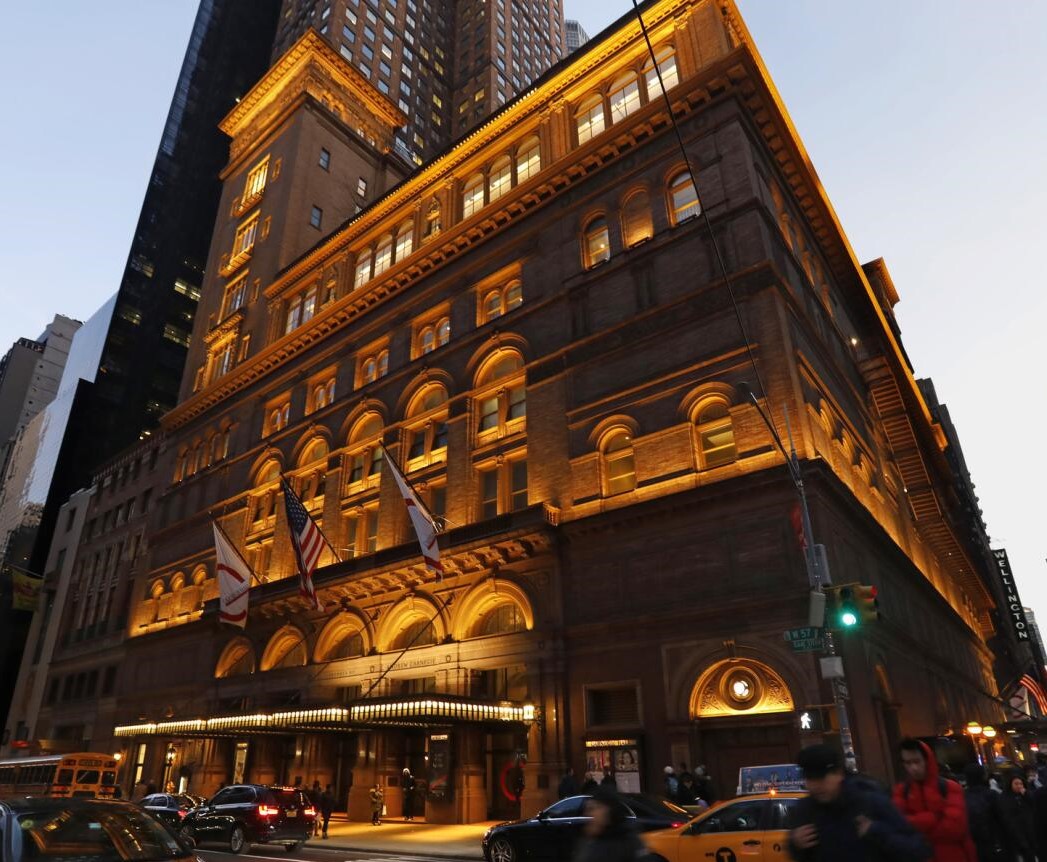 The song continued through a lot of 1964 as well, including their first US concerts at the Washington Coliseum and Carnegie Hall in February. Their world tour, which started on June 4th, started out with “Till There Was You” in their set list. It was during this tour that they retired the song for good, June 17th in Melbourne, Australia being the last reported time the song was played by The Beatles. The song continued through a lot of 1964 as well, including their first US concerts at the Washington Coliseum and Carnegie Hall in February. Their world tour, which started on June 4th, started out with “Till There Was You” in their set list. It was during this tour that they retired the song for good, June 17th in Melbourne, Australia being the last reported time the song was played by The Beatles.
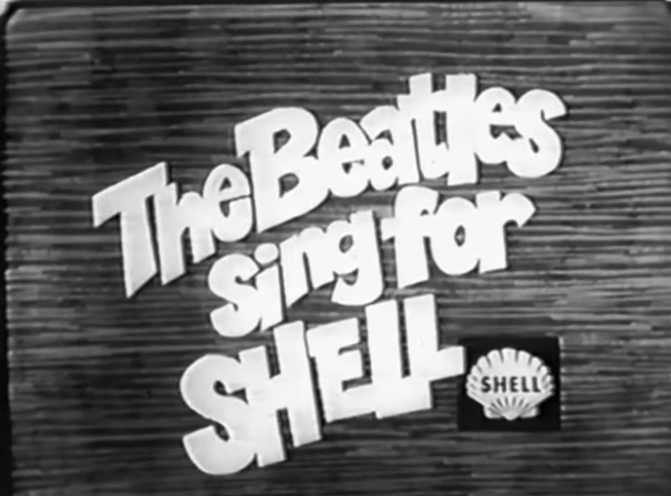 They made five television performances of the song as well, the first being the "Royal Command Performance" which took place on November 4th, 1963 and aired in Britain on November 10th of that year. Then came a live concert on December 7th, 1963 at the Empire Theatre in Liverpool, which became the UK television show "It's The Beatles!" which aired later that same evening. Then came the famous live American "Ed Sullivan Show" appearance on February 9th, 1964, followed by the British show "Big Night Out," this being a mimed performance of the song filmed on February 23rd, 1964 and aired on February 29th of that year. Finally, there was an Australian concert on June 17th, 1964 that featured the song, this show being broadcast on television in that country on July 1st of that year with the title "The Beatles Sing For Shell." They made five television performances of the song as well, the first being the "Royal Command Performance" which took place on November 4th, 1963 and aired in Britain on November 10th of that year. Then came a live concert on December 7th, 1963 at the Empire Theatre in Liverpool, which became the UK television show "It's The Beatles!" which aired later that same evening. Then came the famous live American "Ed Sullivan Show" appearance on February 9th, 1964, followed by the British show "Big Night Out," this being a mimed performance of the song filmed on February 23rd, 1964 and aired on February 29th of that year. Finally, there was an Australian concert on June 17th, 1964 that featured the song, this show being broadcast on television in that country on July 1st of that year with the title "The Beatles Sing For Shell."
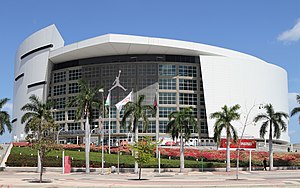 Paul McCartney did finally resurrect the song during his 2005 "The 'US' Tour," which ran from Sept. 16th (at American Airlines Arena in Miami, Florida) to Nov. 30th (Los Angeles, California) of that year. A wonderful version of Paul and his band performing “Till There Was You” from this tour can be seen on the DVD “The Space Within US.” Paul McCartney did finally resurrect the song during his 2005 "The 'US' Tour," which ran from Sept. 16th (at American Airlines Arena in Miami, Florida) to Nov. 30th (Los Angeles, California) of that year. A wonderful version of Paul and his band performing “Till There Was You” from this tour can be seen on the DVD “The Space Within US.”
Conclusion
 Perhaps “Till There Was You” was best described by William Mann in his essay printed in The London Times on December 23rd, 1963, saying: “How fresh and euphonious the ordinary guitars sound in The Beatles' rendition of 'Till There Was You.'” He then describes their performance of this song as “a cool, easy, tasteful version of this ballad, quite without artificial sentimentality.” Perhaps “Till There Was You” was best described by William Mann in his essay printed in The London Times on December 23rd, 1963, saying: “How fresh and euphonious the ordinary guitars sound in The Beatles' rendition of 'Till There Was You.'” He then describes their performance of this song as “a cool, easy, tasteful version of this ballad, quite without artificial sentimentality.”
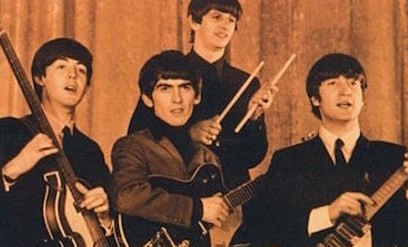 That such a classic piece of songwriting should go mostly unnoticed, even in such an amazing rendition by the biggest recording group of all time, is a real shame. While it may be true that fans of the later Beatles would rather not admit to the existence of the song, those who avidly acknowledge the finer things in music should definitely take notice. The songwriting is perfect and The Beatles' performance is flawless. Enough said. That such a classic piece of songwriting should go mostly unnoticed, even in such an amazing rendition by the biggest recording group of all time, is a real shame. While it may be true that fans of the later Beatles would rather not admit to the existence of the song, those who avidly acknowledge the finer things in music should definitely take notice. The songwriting is perfect and The Beatles' performance is flawless. Enough said.
Song Summary
“Till There Was You”
Written by: Meredith Willson
-
Song Written: 1950 (estimated)
-
Song Recorded: July 30, 1963
-
First US Release Date: January 20, 1964
-
-
US Single Release: Collectables #1506
-
Highest Chart Position: n/a
-
British Album Release: Parlophone #PCS 3045 “With The Beatles”
-
Length: 2:16
-
Key: F major
-
Producer: George Martin
-
Engineers: Norman Smith, Richard Langham
Instrumentation (most likely):
-
Paul McCartney - Lead Vocals, Bass Guitar (1961 Hofner 500/1)
-
George Harrison – Lead and Rhythm Guitar (1950 Jose Ramirez de Estudio)
-
John Lennon – Rhythm Guitar (1962 Gibson J150E)
-
Ringo Starr – Bongos
Written and compiled by Dave Rybaczewski
|
IF YOU WOULD LIKE TO MAKE A DONATION TO KEEP THIS WEBSITE UP AND RUNNING, PLEASE CLICK BELOW!
Sign Up Below for our MONTHLY BEATLES TRIVIA QUIZ!
|